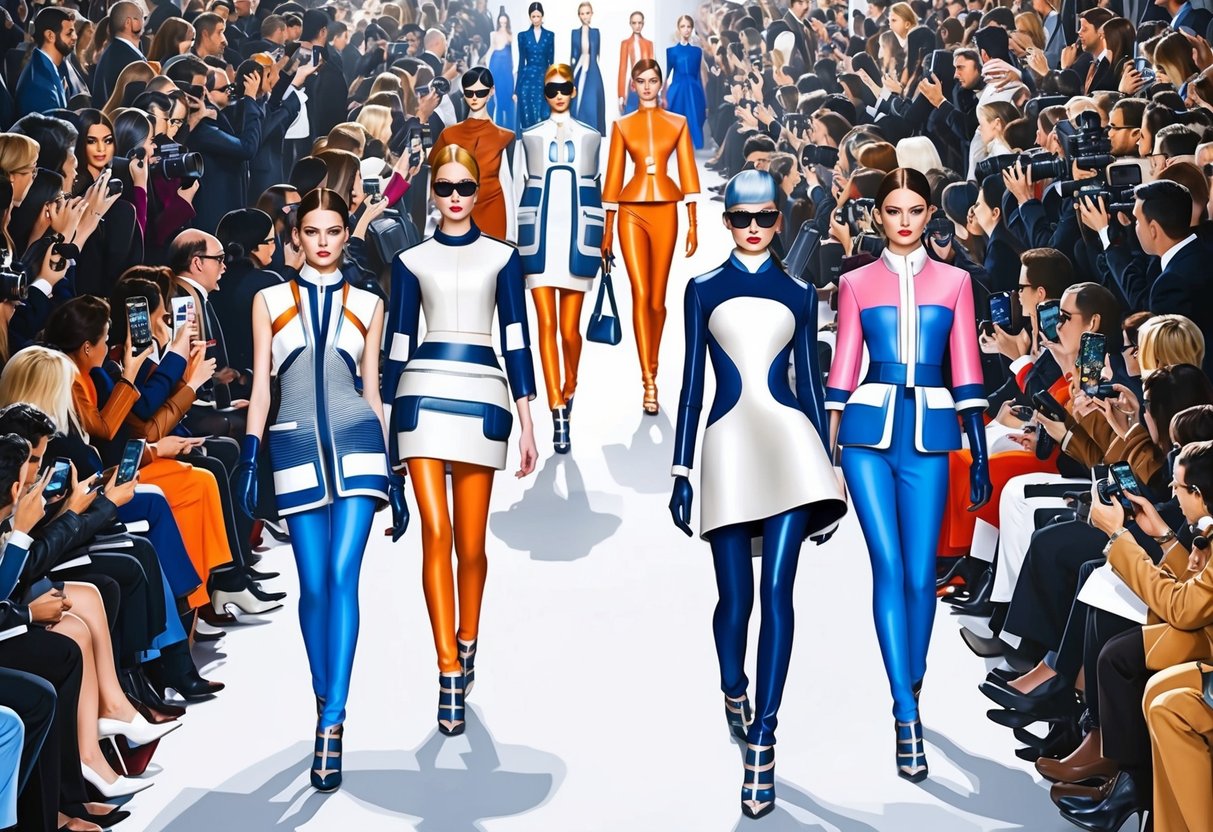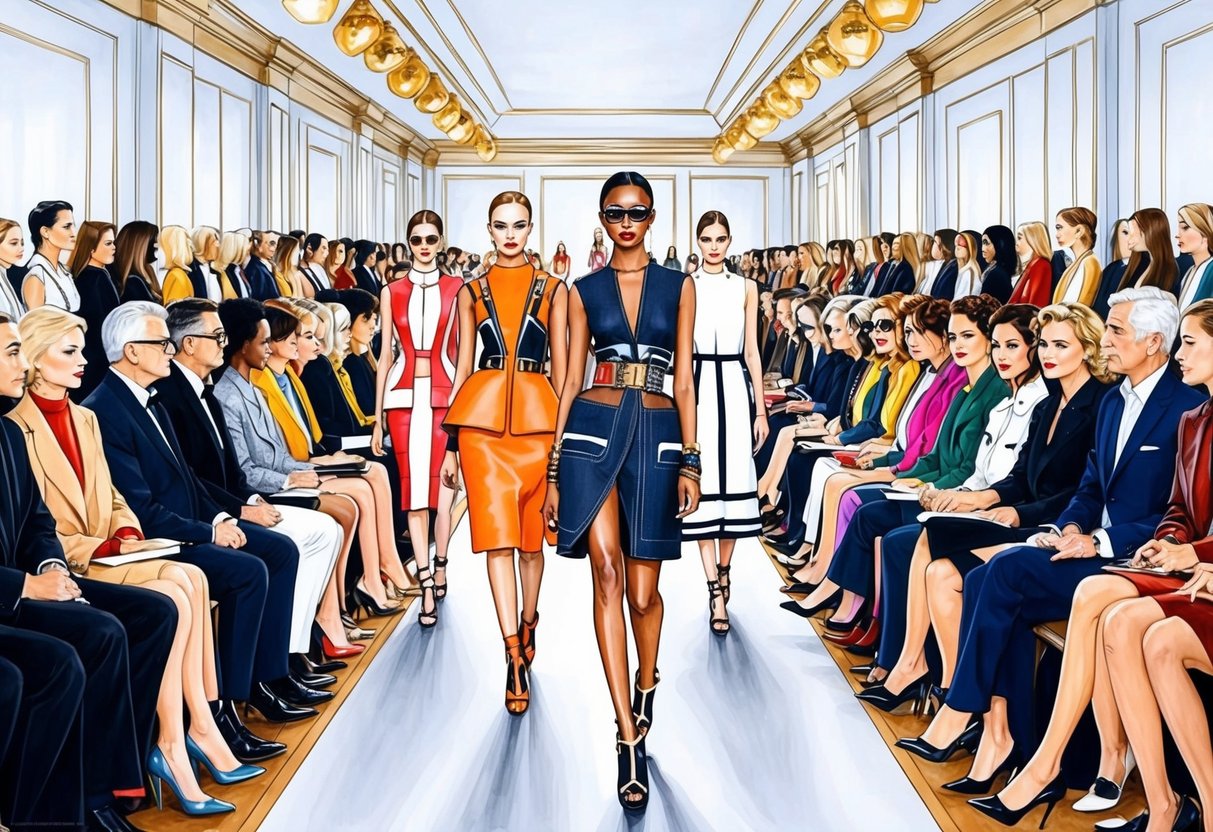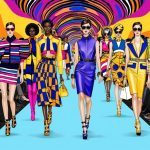
Fashion enthusiasts and industry insiders are focusing on emerging trends as the runway and streetwear scenes evolve this year. Key influences for 2025 include sheer silhouettes, bold animal prints, pistachio and fruity red hues, pleated skirts, and a noticeable return to personal style.
Designers are showing a mix of softness and new maximalist elements. City streets reflect a wave of billowing, floaty shapes and reminiscent athleisure pieces, ensuring creativity is at the forefront of both high fashion and everyday dressing.
The upcoming season’s collections celebrate both statement-making and wearable trends, from slim sneakers and fluid fabrics to vivid colors and dynamic patterns. Observers are already seeing the convergence of runway trends and street style, proving that individuality and comfort are major drivers this year.
With an emphasis on versatility and self-expression, fashion is shifting to accommodate diverse lifestyles while maintaining cutting-edge appeal. Anyone wondering what will set the tone for spring and summer wardrobes can look to the most talked-about spring/summer 2025 fashion trends for inspiration.
Defining Emerging Fashion Trends
Emerging fashion trends often reflect shifts in society, technology, and consumer preferences. Observing what sets these new trends apart and how they develop helps explain why certain styles gain rapid traction on both the runway and in streetwear.
What Sets Emerging Fashion Trends Apart
Emerging fashion trends differ from established ones by their ability to disrupt norms and introduce unexpected elements to the fashion landscape. Designers frequently experiment with color, silhouette, and textile, moving past traditional boundaries to spark new interest.
Key characteristics include:
- Innovative use of materials such as recycled fabrics or tech-infused textiles.
- Emphasis on individual expression and authenticity.
- Faster diffusion into mass market through digital platforms and social media.
Recent seasons have seen the rise of colors like pistachio and bolder patterns, including animal prints, which stood out in Spring 2025 collections. These styles quickly migrate from runway moments to daily wear, emphasizing adaptability and widespread appeal.
How Trends Evolve in Runway and Streetwear
Fashion trends often originate on the catwalk, where leading designers showcase creative concepts during major fashion weeks. Once these runway moments gain media coverage, influencers and early adopters rapidly translate high-concept looks into wearable streetwear.
Street style plays a vital role in the evolution of trends. Everyday people remix luxury fashion with casual and vintage elements, making styles like pleated skirts and athleisure staples of contemporary urban wardrobes.
Digital culture accelerates this evolution. Social media apps and online communities amplify certain runway and streetwear moments, allowing global audiences to access new trends in real time.
This quick diffusion cycle ensures that fashion remains dynamic and responsive to cultural changes.
Influence of Major Fashion Houses and Designers

Fashion’s current trajectory is being set by renowned designers and influential couture houses. Both runway collections and streetwear are shaped by a mix of creative risk-taking, tradition, and adaptability to cultural shifts.
Pioneering Designers Shaping the Season
Designers like Demna Gvasalia at Balenciaga, Miuccia Prada, and Jonathan Anderson at Loewe continue to redefine high fashion with bold riffs on classic silhouettes and experimental textiles. Each season, their collections introduce new color palettes, innovative layering, and tailoring twists that quickly influence global trends.
As seen on the runways, these leaders embrace elements like pleated skirts, vibrant reds, and sportswear references that filter from couture into ready-to-wear and even streetwear. Their work often merges high craftsmanship with elements borrowed from everyday life, challenging the distinction between luxury and casual wear.
Collaboration remains a key driver of innovation. Partnerships like Louis Vuitton with artists or sports brands not only create buzz but also set the tone for how formal and casual boundaries continue to blur.
Designers carefully balance brand heritage with forward-thinking styles, ensuring collections feel both timely and enduring.
Fashion Houses Driving Innovation
Major fashion houses—such as Chanel, Gucci, and Dior—are catalysts for evolution in both couture and streetwear. These heritage brands leverage their global platforms to spotlight groundbreaking new talents and set narratives that smaller labels adopt.
Innovations are not limited to aesthetics. Many of these houses have implemented advanced materials, digital presentations, and sustainability initiatives, directly influencing the direction of the wider industry.
Tech-infused fabrics and eco-conscious approaches reflect how high fashion adapts to 21st-century expectations. Fashion weeks are essential events for launching these developments, providing visibility that accelerates the diffusion of trends into the mass market.
With their cultural reach and creative teams, brands are key players in defining what styles will be seen from runways to real life, as detailed in this article on the catwalk effect.



